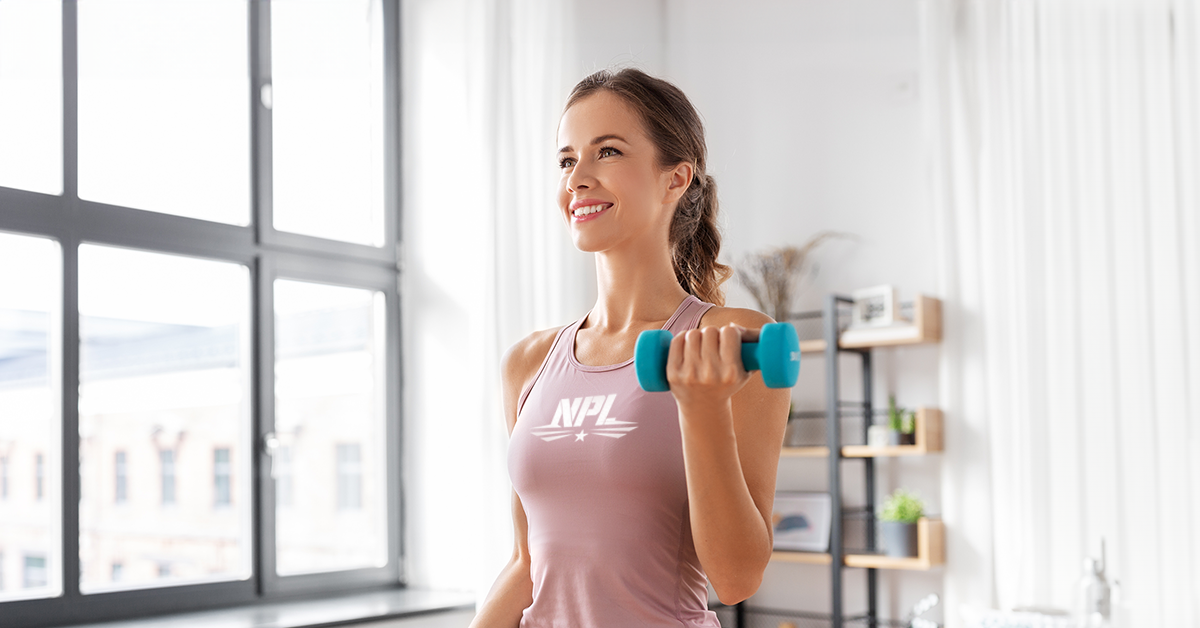Weight Training for Women: Heavy vs. Light Weights

Should You Lift Heavy or Light?
Whether you’re reaching for light or heavy weights in the gym, both options offer incredible benefits. But if you're still figuring out where you fit in, it's important to remember that weight is relative; everyone’s version of "heavy" or "light" looks different. Let’s explore the advantages of each approach and help you decide which one aligns best with your goals.
Lighter Weights
Lighter weights aren’t just for beginners; they’re great tools for building muscle endurance, toning, and improving control. If you’re new to weightlifting, starting light helps you master proper form without risking injury. Typically, lighter weights fall between 30 - 60% of your one-repetition maximum (1RM)—the heaviest amount you can lift for one rep. This range allows you to focus on technique while still challenging your muscles.
One key benefit of lifting lighter is the increased time under tension (TUT)—the longer your muscles stay engaged, the better your endurance develops. Whether you're recovering from an injury, prioritising mobility or just looking to stay active and feel good, lighter weights could be the perfect fit for your goals.
Full Body Lighter Weights Workout:
-
Dumbbell Squat to Press
Weight: 2-5 kg
Reps: 10-15 -
Plank with Dumbbell Row (Renegade Rows)
Weight: 2-5 kg
Reps: 10-15 per side -
Lateral Raises
Weight: 2-5 kg
Reps: 10-15 -
Mountain Climbers (Bodyweight)
Reps: 10-15 per leg -
Side Lunges
Weight: 2-5 kg (optional)
Reps: 10-15 per leg
Heavier Weights
Lifting heavy is where the magic happens if you're chasing strength. Heavier weights are typically considered to be 80% or greater of your one-repetition maximum (1RM), while moderate to heavy lifting falls above 60% 1RM. Moving these weights for fewer reps targets the deeper muscle fibres responsible for power and strength.
This approach not only helps you develop strength and size but also keeps your metabolism elevated, allowing your body to continue burning calories long after your workout is done. If you love pushing your limits and want to see real strength and muscle gains, incorporating heavier weights could be the perfect way to stay motivated in the gym.
Full Body Heavier Weights Workout:
-
Goblet Squat
Weight: 8-12 kg
Reps: 8-12 -
Dumbbell Deadlift
Weight: 8-12 kg
Reps: 8-12 -
Dumbbell Overhead Press
Weight: 6-10 kg
Reps: 6-10 -
Bent-Over Dumbbell Row
Weight: 6-10 kg
Reps: 8-12 -
Kettlebell Swings
Weight: 8-12 kg
Reps: 10-15
Finding What Works for You
There’s no one-size-fits-all approach; it’s about aligning your training style with your goals. For some, alternating between lighter and heavier sessions may be the most effective strategy, helping to create a balance between endurance and strength training.
Keep in mind that if your muscles aren't challenged, progress will stall. So, instead of stressing over the weights, focus on whether your workout meets your goals and pushes you enough to drive results.






